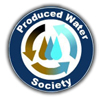General Calibration
If your 50% dilution reads about half, but your 200 ppm standard solution reads low, it means that your linear range is between 100 and 200. You can make standard solutions between 100 and 200 to learn the actual linear range.
The monitor will also display negative numbers if the measurement is less than the value of the blank. Although negative concentrations are only theoretical, a display of a negative concentration is very important diagnostic information for our monitor since fluorescence is never measured from an absolute zero, but in reference to a defined zero. Thus, a negative measurement in the presence of water indicates that the defined zero, which the customer selects, is not appropriate. If the display was truncated to zero, this situation, which will occur in water obtained from natural sources, will never be detected. It could also cause false measurements from the monitor if not corrected.
TD-500D
(Discontinued)
TD-3100
(Discontinued)
TD-4100XD and TD-4100XDC
A) Unless you are specifically using a nonlinear calibration, you want to limit the measurement range of the monitor to the linear range where change in fluorescence is linearly proportional to concentration. The linear range varies depending upon the monitor parameters, monitor configuration, water source, and hydrocarbon type; however, Turner Designs Hydrocarbon Instruments generally configures the monitor to operate in the linear range for your application. If your application involves measurement over a dynamic range, then a nonlinear calibration is necessary. The absolute limit of the monitor would be the dynamic measurement range.
B) Measurements are also limited by the maximum fluorescence measurement capacity of the monitor, which for the E09 series is 10,000 RFU (relative fluorescence units). If a measurement is beyond 10,000 RFU, then OVER is displayed on the monitor’s screen.



